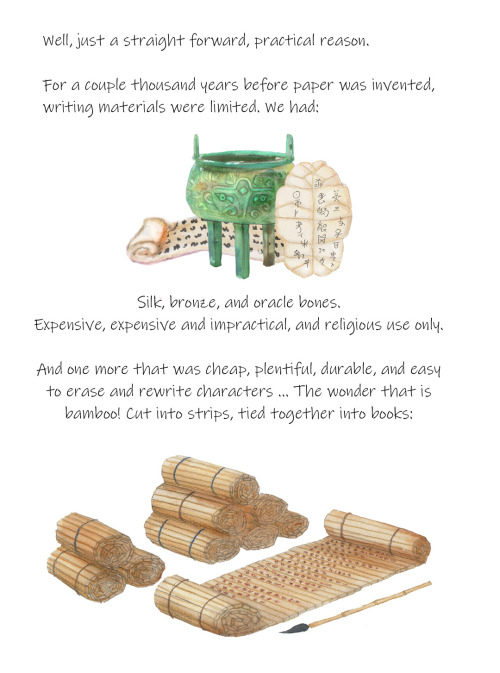jasonpym:The vast majority (around 80%) of Chinese characters are made up of a radical (the general
jasonpym:The vast majority (around 80%) of Chinese characters are made up of a radical (the general meaning) and a phonetic. Radical 女 nǚ (woman) and phonetic 馬 mǎ (horse) = 媽 mā, mother (your mum sounds like a horse).But a small minority are pictograms, that is to say a picture of the thing they represent.Pictograms are the earliest characters, thousands of years old, but many are still used every day. If you look at the oracle bone script for rat, tiger and elephant you’ll see they are clearly pictures of the animal they signify. But if you look at the modern versions, you’ll notice something odd, they’re all rotated 90 degrees onto their sides. Why? Why are all these characters written with the animals balancing on their tails?Well, it’s for a straight-forward, practical reason.For a couple thousand years before paper was invented writing materials were limited. We had silk (expensive), bronze (expensive and impractical), and oracle bones (religious use only). And one more…That was cheap, plentiful, durable, and easy to erase and rewrite characters. The wonder that is… Bamboo!It was cut into strips, and tied into books. Long thin strips of bamboo contributed to the Chinese custom of writing vertically, from top to bottom (and right to left).But it also meant that it’s much easier to write some characters length-ways so that they easily fit onto the strip. So that’s it, mystery solved. That’s why a lot of Chinese picture characters are written at a right angle. -- source link
Tumblr Blog : jasonpym.tumblr.com
#languagecrack#delightful




